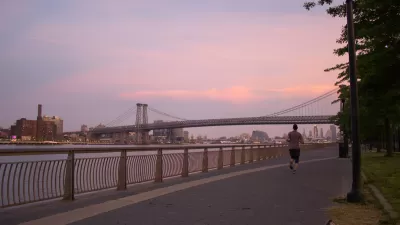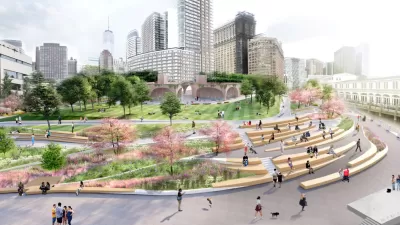The lack of a single strategy for how to protect the areas devastated by Hurricane Sandy from future storms leaves residents to choose between two unappealing options: rebuild in place and risk future disaster or abandon their neighborhoods.
Recent articles in Bloomberg and The Wall Street Journal reveal how two divergent post-Sandy rebuilding strategies - New York State's plan to compensate residents to retreat and the City of New York's steadfast support for rebuilding in place - are resulting in an uncoordinated, and often maddening, range of responses to the threat of future storms.
On Staten Island, James S. Russell finds confusion and anger about the options for rebuilding being considered. "Many Sandy victims want to rebuild what they had where they were," says Russell. "But if data still being collected show that houses cannot be raised high enough or that neighborhoods can’t be realistically protected, then it would be folly to allow or help people to rebuild."
"To me one thing was clear," he adds. "Planning for the future must begin now -- not after the city collects data. Too many people are stuck in rebuilding limbo, and many will lose otherwise recoverable assets if they can’t make decisions quickly, with greater certainty."
Meanwhile, in the Breezy Point section of Queens, Laura Kusisto finds a community committed to rebuilding in place, a strategy supported by the mayor and $350 million in federal funding. "'We think that virtually 99% of the people who live at the water's edge will want to continue to do that,' said Mayor Michael Bloomberg, at a recent news conference."
"Some, however, question the mayor's strategy, given the towering cost to future governments if natural disasters become more frequent as many scientists predict," notes Kusisto. "'If you approach it from a rational approach it's insane," said Klaus Jacob, a Columbia University professor who specializes in disaster risk management. 'We are setting ourselves up for ever more disasters.'"
FULL STORY: Sandy Victims’ Fear, Anger Delay Key Planning Decisions

Planetizen Federal Action Tracker
A weekly monitor of how Trump’s orders and actions are impacting planners and planning in America.

Map: Where Senate Republicans Want to Sell Your Public Lands
For public land advocates, the Senate Republicans’ proposal to sell millions of acres of public land in the West is “the biggest fight of their careers.”

Restaurant Patios Were a Pandemic Win — Why Were They so Hard to Keep?
Social distancing requirements and changes in travel patterns prompted cities to pilot new uses for street and sidewalk space. Then it got complicated.

Platform Pilsner: Vancouver Transit Agency Releases... a Beer?
TransLink will receive a portion of every sale of the four-pack.

Toronto Weighs Cheaper Transit, Parking Hikes for Major Events
Special event rates would take effect during large festivals, sports games and concerts to ‘discourage driving, manage congestion and free up space for transit.”

Berlin to Consider Car-Free Zone Larger Than Manhattan
The area bound by the 22-mile Ringbahn would still allow 12 uses of a private automobile per year per person, and several other exemptions.
Urban Design for Planners 1: Software Tools
This six-course series explores essential urban design concepts using open source software and equips planners with the tools they need to participate fully in the urban design process.
Planning for Universal Design
Learn the tools for implementing Universal Design in planning regulations.
Heyer Gruel & Associates PA
JM Goldson LLC
Custer County Colorado
City of Camden Redevelopment Agency
City of Astoria
Transportation Research & Education Center (TREC) at Portland State University
Camden Redevelopment Agency
City of Claremont
Municipality of Princeton (NJ)




























